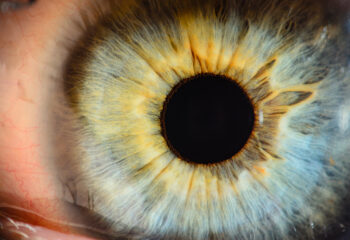Age-related macular degeneration (AMD) is a common eye condition that impacts millions in the United States alone. In our previous article, we explored the different levels and types, as well as major risk factors.
Thankfully, treatment is an effective option now.
Even just fifteen or so years ago, having the advanced form of AMD almost guaranteed that your vision would become severely impaired.
Treatment for Wet AMD
Treatment for wet AMD is one of the biggest advances – in all of medicine – within the past two decades.
Currently, the standard treatments for wet AMD are delivered by injections into your eye.
A needle to the eye sounds scary, and everyone is nervous the first time. But rest assured, it’s not as bad as it sounds.
Every single one of my patients after their first injection has commented along the lines of, “That’s it?”, “That wasn’t bad at all!” or “You’re done already?”. We numb the eye well, and you might feel some pressure, but it shouldn’t be painful.
Your eyes may feel irritated for the rest of the day after the numbing medication wears off though, and this is caused by the anti-septic that we all use to prevent infections.
Stay Alert After Your AMD Treatment
The main precaution is to contact your retina specialist if you have any vision loss or pain a few days after an injection, which are potential signs of an infection, and that needs to be treated aggressively. Infections are very rare but that’s one thing to look out for as a patient receiving injections.
One of the joys of being a retina specialist is that we get to know our patients with wet AMD and their families really well.
In fact, you’ll probably see us more than any one of your other physicians. The injections, for the time being, are required relatively frequently, especially in the beginning.
New Advances in Treatments for AMD
There are many promising new treatments in the pipeline for wet AMD also, that hopefully will work even better with longer durability, so that we can decrease the treatment burden and further improve outcomes.
Tremendous efforts are being made in numerous laboratories and clinical trials to advance what we can offer patients with wet AMD.
Right now, is one of the most exciting times for developments in the management of wet AMD, and hopefully, similar strides can be made for dry AMD as well.
Some exciting clinical trials and research for geographic atrophy (GA) include agents to block specific pathways are also underway.
There is a lot of hype and hope surrounding stem cells in all of medicine, but one word of caution regarding stem cell therapies: please talk to your retina specialist before enrolling in stem cell trials.
There are very few legitimate active stem cell trials, but there have been reports of fraudulent and financially driven “stem cell clinics” that have blinded vulnerable patients looking for hope.
Hope for the Future
You are definitely not alone.
In addition to the millions of other people living with AMD, your retina specialists and thousands of vision researchers are working hard to make new discoveries.
February is National AMD Awareness Month – please spend a moment to talk to your friends and family to discuss what it means to live with AMD, the progress that we have made, and the promising hope we have for the future.







